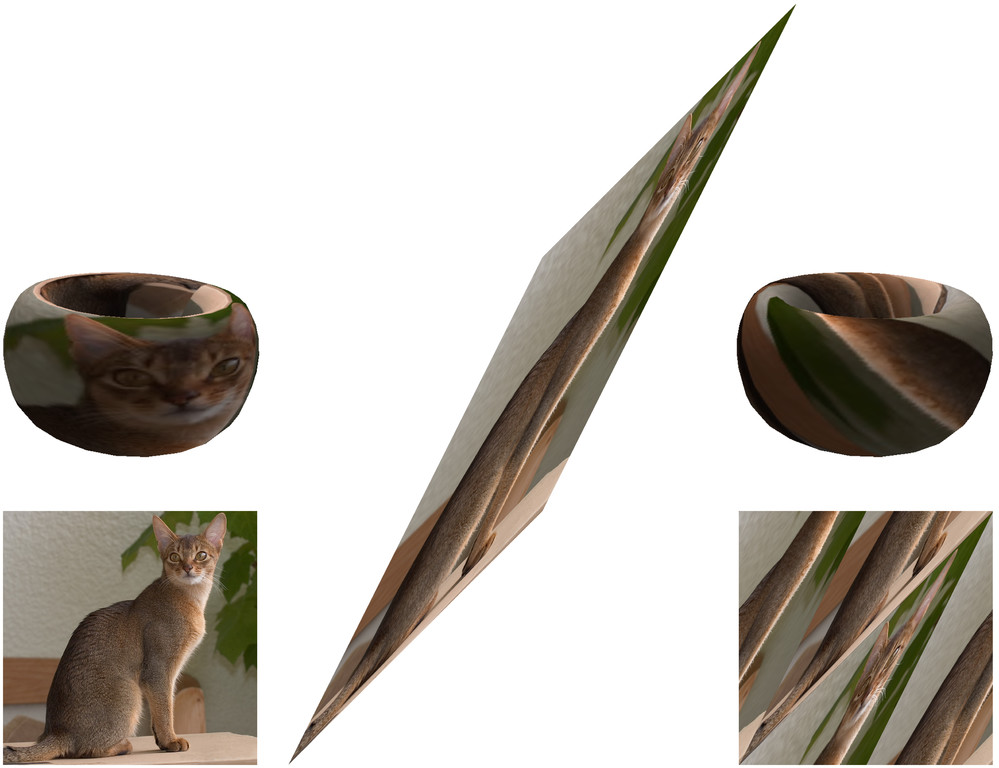
“The Eiffel Tower is the Empire State Building after taxes.” — Anonymous

“The Eiffel Tower is the Empire State Building after taxes.” — Anonymous

1930 saw the quiet conclusion of a remarkable era. The tiny population of St. Kilda, an isolated Scottish archipelago, decided to end their thousand-year tenure as the most remote community in Britain and move to the mainland. In this week’s episode of the Futility Closet podcast we’ll describe the remarkable life they’d shared on the island and the reasons they chose to leave.
We’ll also track a stork to Sudan and puzzle over the uses of tea trays.
Inspired by James McKee’s Trinity Hall prime, physics researcher Gilles Esposito-Farese (of the self-descriptive pangram) has worked out that this 2,258-digit prime number:
53084469288402965415857953902888840109250315594591772197851275320
59910735745658243457138160802170063601085186072703319516241231606
86858731799078163479147444957979157038109676507221794134810159187
99946828292780972255445123198357952762990102770564813212521111380
68349356142222060588948481473772481328151681322128358047354205784
70540373426870045719371801557904317944239925854314103160489406736
99060594293236420918525997085793619098456109204165164418661475892
01109662597018777150106134376006906212249382614768188594613749419
81773446881694503562852062669737115544391406458301430146238093071
02894114746014041621168186006763973309046545159248106457826024237
26295585692705999572335711556642484343647905815411003310539537633
41950800883057333667657184487306007957156203546941504909814030908
34965188540308705963440466656812927154037805823279990648845960204
63331562527077555356154644447566217362506777244670808476000607805
03811498534406491478259767678703610171309197408223291080531370612
62650405840051780819121599354652788179742394248611555080762986718
96826790066089904275315943211982421764246751417927128802586925712
27099955857542532516878558368313422620050604202219808465512659996
23064148740328947837353070554937134618609926277437895029980245174
01474719468068984349536087237870814923058804265001775440222136692
19497268319149971553957338283899722324260346170316327132892172432
93414823219221781561202067498414863282586486396494894086735311984
87542808513750059732993808185407922249214024344950525276107816857
04707717662079906664246810240363777462148167179131661698526525933
27455038156208677911356439404008565505518270407112444336214476635
90179341953108431111005767617305509479336875319574363889314007557
80075653313610206913250864729950372237487765836958630210102788727
36316538995288936776915812144955490067485142591851239438281782980
49266403870939263057525714093639423600887115586024837895236645603
39309565092104096166270212323904043359754209734891624081548291170
80360665817900770688282037236785560524155682291636091743772117655
59023604955032646389401878907537621901104165756011023874877122701
96250964612099585830958920626319449976949804992786372992220222097
60635584717392117583345925369515540556572166535535975903825177497
033726681165539444448225642477607711558401523711
renders these 7,500 digits in binary:

This is a 30,000-digit prime:

And this is self-explanatory:

(Thanks, Gilles.)


In the 1960s, Soviet mathematician Vladimir Arnold mapped the square image of a cat to a torus, “stretched” (sheared) it as shown on that surface, then sliced the resulting image into pieces and recomposed them into a square.
As the process is repeated, any two points in the image quickly become separated, but, surprisingly, after sufficient repetitions the original image reappears.
A discrete analogue is at right. As the transformation is repeated, the image appears increasingly random or disordered, but the underlying cat can be glimpsed making occasional appearances, sometimes as a ghostly suggestion, sometimes in multiple smaller images, and occasionally (yowling, one imagines) even upside down.
It reappears again, unhurt, at the 300th iteration.
It’s called Arnold’s cat map. You can try it yourself here.
Numbers 23 and 24 Leinster Gardens, London, are not the terraced houses they appear to be. Their façades match their neighbors’, with columned porches and windows and balustraded balconies, but the doors have no knobs or letter boxes.
In fact the whole expanse is false, only a façade 5 feet thick. Behind it is a section of uncovered railway track. When a tube line was built through the neighborhood in 1863, the steam engines that hauled the trains needed a section of uncovered track to let off smoke and steam. To preserve appearances for the surrounding residents, the railway company built these frontages, and they remain to this day.
Writes Stuart Barton in Monumental Follies, “It is unfortunate that more sham facades like this are not built to conceal some of the eye-sores that scar our cities today.”
If we’re committed to individual rights, then we want a society in which freedoms are not arbitrarily restricted; you should get to exercise your preferences so long as this doesn’t harm someone else. But consider a tiny society of only two people, Lewd and Prude, and a copy of Lady Chatterley’s Lover. Lewd would prefer to read the book rather than have it disposed of unread, but even more than that he’d love to see Prude forced to read it:
Prude reads > Lewd reads > no one reads
Prude would like to see the book disposed of but, short of this, would prefer reading it himself to seeing Lewd enjoy it:
no one reads > Prude reads > Lewd reads
How should a social planner rank these three outcomes? If we’re determined to respect individual rights, then Lewd and Prude should each get to decide whether to read the book; Lewd shouldn’t be prevented from reading it, but Prude shouldn’t be forced to. So we’ll let Lewd’s preference decide between the outcomes “Lewd reads” and “no one reads,” and we’ll let Prude’s decide between “Prude reads” and “no one reads.” But that gives
Lewd reads > no one reads
and
no one reads > Prude reads,
so, for consistency, the social planner arrives at the ranking
Lewd reads > no one reads > Prude reads
and gives the book to Lewd to read.
But both Lewd and Prude would have preferred that Prude be given the book! Harvard economist Amartya Sen argues that this challenges the notion that markets can allocate resources efficiently while respecting individual freedoms.
(Amartya Sen, “The Impossibility of a Paretian Liberal,” Journal of Political Economy 78:1 [1970], 152-157.)

There’s not much to say about this, but it’s wonderfully picturesque: Standing near the village of Plougrescant on the coast of Brittany is Castel Meur, “the house between the rocks.”
Constructed in 1861, it’s situated between granite rocks to protect it from storms.
01/28/2020 UPDATES:

Casa do Penedo, in northern Portugal, has boulders for its foundation, walls, and ceiling. (Thanks, Rui.)

Wickhams department store planned an imposing new edifice in London’s East End in 1923, but the Spiegelhalter family refused to sell its jewelry shop, so the Wickhams facade had to be built “around” it. The “Spiegelhalter gap” was never closed — the department store closed in the 1960s, while the jewelers’ held out until 1982. (Thanks, Nick.)

St. Govan’s Chapel in Pembrokeshire, Wales, is built into the side of a limestone cliff — visitors must climb down a flight of 52 stairs to reach it. (Thanks, Chris.)
In February 1949, Chilean army captain Alberto Larraguibel set out to attempt a world-record high jump riding Huaso, a 16-year-old stallion whom he’d trained assiduously in show jumping after undistinguished careers in racing and dressage:
On the first try, I miscalculated the distance and allowed the horse to refuse. If I had then applied the whip, the horse would have become nervous, because an animal understands when it’s being asked to perform above his capabilities. In the second jump, I must have made a mistake of a centimeter or so, because Huaso passed the hands but touched with the belly and the hinds, and knocked down the obstacle … there was only the third and last attempt left. I recalculated again, and in the precise moment we flew… The most difficult moment was the apex of the jump. My eyes were about 4 meters above the ground and I had the sensation of falling head first. My slightest tremor would have been felt by Huaso; who then would have left his hinds behind and we would have crashed together, but we went over. The moment seemed to last forever. I didn’t hear a single shout and thought that something had gone wrong, but I couldn’t hear the obstacles falling either …
Huaso had cleared 2.47 meters (8 feet 1 inch), setting one of the longest-running unbroken sport records in history.
“As for me,” Larraguibel said, “it was like sending my heart flying over the other side of the jump and then going to rescue it.”
In his 1966 book New Mathematical Diversions From Scientific American, Martin Gardner predicted that the millionth digit of π would be 5. (At the time the value was known only to about 10,000 decimal places.) He was reprinting a column on π from 1960 and included this in the addendum:
It will probably not be long until pi is known to a million decimals. In anticipation of this, Dr. Matrix, the famous numerologist, has sent me a letter asking that I put on record his prediction that the millionth digit of pi will be found to be 5. His calculation is based on the third book of the King James Bible, chapter 14, verse 16 (it mentions the number 7, and the seventh word has five letters), combined with some obscure calculation involving Euler’s constant and the transcendental number e.
He’d intended this as a hoax, but eight years later the computers discovered he was right.